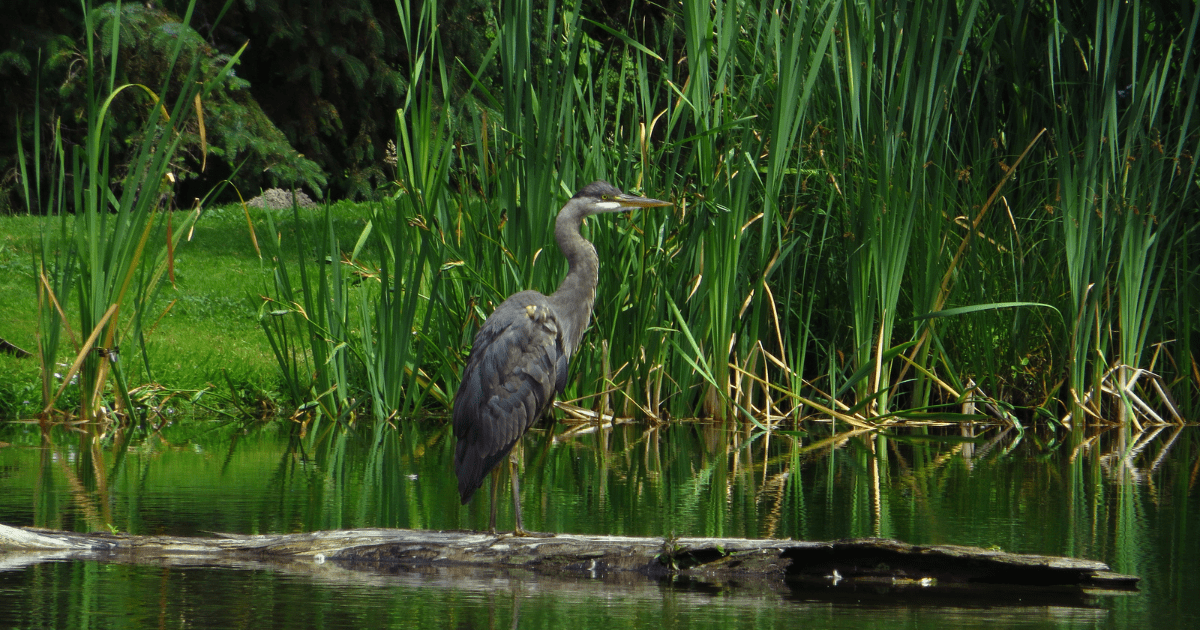
Over the summer, The Nature Trust of British Columbia’s South Coast Conservation Field Crew continued work on the restoration of Luckakuck Creek in the Wells Sanctuary conservation area in Chilliwack, B.C. Our crew, along with the Ducks Unlimited Canada Operations and Maintenance Crew, worked together to improve habitat and ecosystem function with a focus to benefit threatened native species.
One of the invasive species that the South Coast Conservation Field Crew manages at this site is yellow flag iris (Iris pseudacorus). The bright yellow flowers can be seen in many wetlands and waterways in the spring months. Once established, yellow flag iris forms dense matts of rhizomes and outcompetes many native plants leading to a loss of habitat for amphibians, fish, and bird species. These clustered rhizomes also create places for soil and debris to collect and slow the flow of streams, further creating inhospitable conditions for native fish species. Yellow flag iris’s main dispersal method is by seed as they float across large distances down streams and waterways.
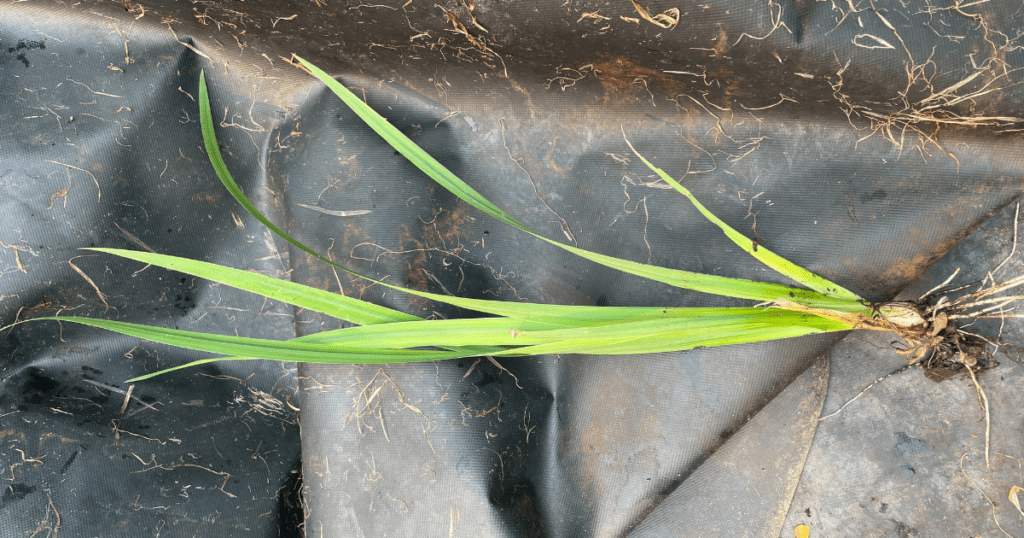
Yellow flag iris plant. Key ID features when not in flower include a fan-like arrangement to the leaves and a ridge going up the middle of each leaf. This differentiates it from similar-looking broadleaf cattail (Typha latifolia).
The changes that yellow flag iris creates in waterways negatively affect native fish and wildlife in the area. The Salish sucker (Catostomus sp. cf. catostomus) is a species of fish that within British Columbia is only located in the Fraser Estuary and has been found in Luckakuck Creek. As bottom-dwelling insectivores, Salish suckers need habitat without too much sediment, so that they have adequate locations for spawning as well as abundant prey. They require water that is cool with adequate oxygen levels in order to breathe. When yellow flag iris is present in a stream it slows the flow of water so it has less oxygen coming in. Moreover, warmer waters have less capacity to hold oxygen. Salish suckers tolerate higher temperatures and lower dissolved oxygen levels than most other native fish species in the region but these two factors are still some of the most serious threats to this species.
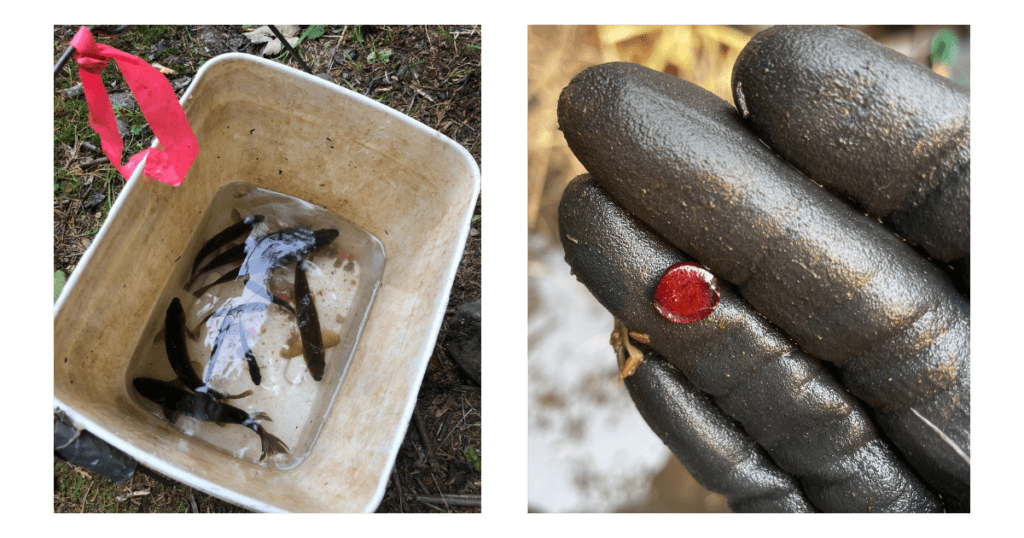
Left: Salish suckers and other fish species surveyed by Pearson Ecological at Wells Sanctuary site. Right: Yellow flag iris seed found under the benthic barrier.
At Wells Sanctuary, benthic barriers were installed in 2021 to remove a patch of yellow flag iris in Luckakuck creek. The dense mat of rhizomes is quite difficult to dig out by hand, especially as they are usually located within or surrounding waterways and may be hard to access. The rhizomes also give the plants a large store of energy that makes them unresponsive to cutting as a treatment. Benthic barriers cut off the plant’s access to oxygen and sunlight and are more effective while requiring less time and less disturbance to the creek.
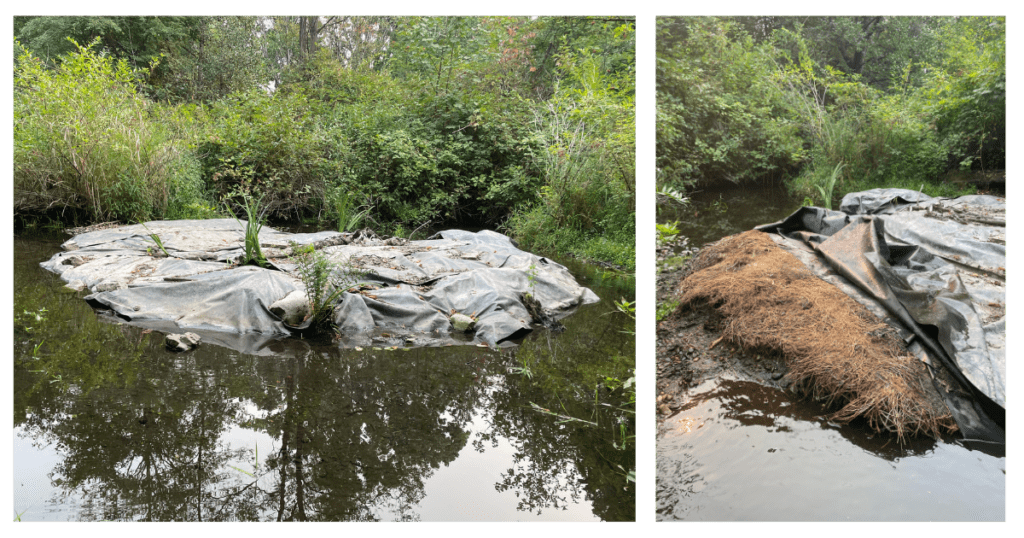
Photos of the benthic barrier applied to yellow flag iris in Luckakuck creek.
This month, the crew lifted the benthic barrier after it had been in place for over a year. Unfortunately, we determined that it was not ready to be moved as there were still tubers that were healthy and the yellow flag iris would regrow if it was removed too soon. We rearranged the barrier to make sure no light can get in and will check it again in a few months. Once the tubers are all a darker colour and have started decomposing, the barrier will be removed and the sediment that it had been holding in place can wash away to reveal a rocky stream bottom. This will also give us the chance to move the barrier to a new location along the creek! The crew can’t wait to apply this technique at other sites, and to see how Luckakuck creek recovers with continued restoration.
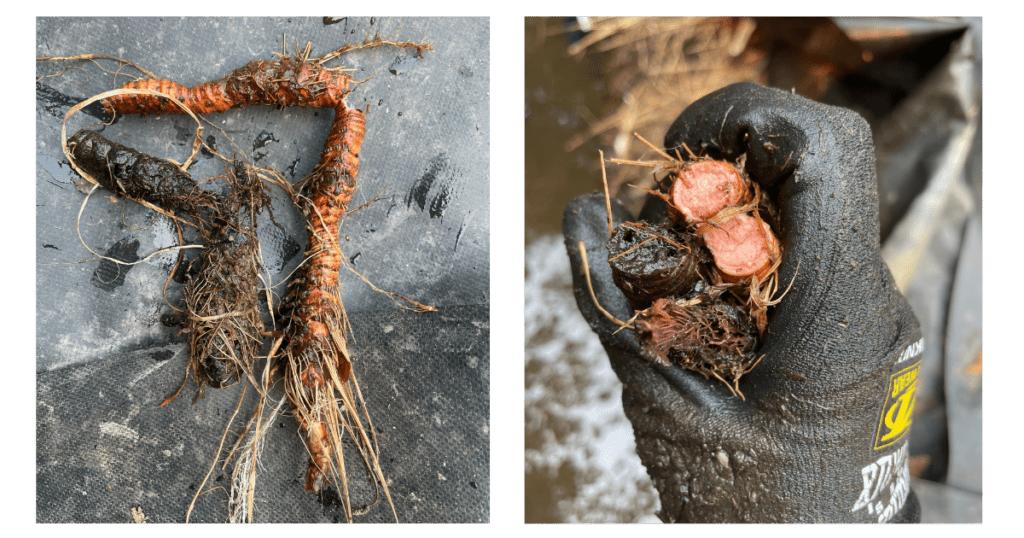
Comparison between healthy and dead rhizomes. When the crew first lifted the benthic barrier it seemed like the yellow flag iris was gone but upon further investigation, many of the rhizomes were still alive.
Donate today to help continued restoration efforts at Wells Sanctuary and other important ecological areas across British Columbia!
 Written by Laura Holt, of the South Coast Conservation Field Crew
Written by Laura Holt, of the South Coast Conservation Field Crew

